Waterfalls 🢔 Geological wonders 🢔 Categories of wonders
Wonder
Ruacana Falls
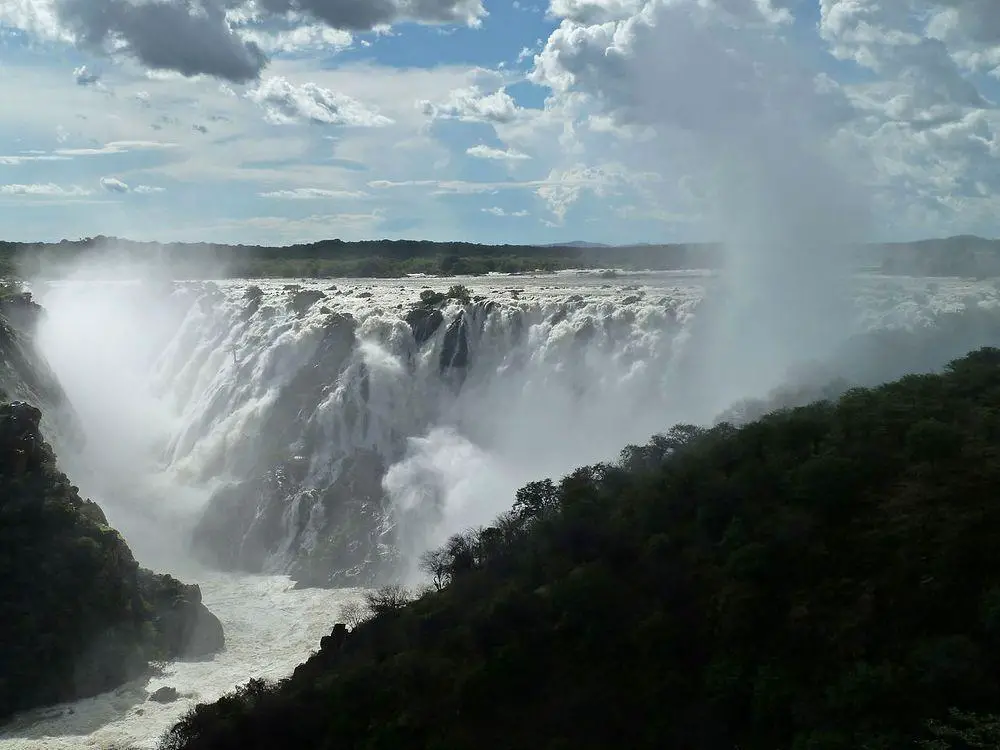
 In short
In short
There are times when Ruacana Falls on the border of Namibia and Angola is one of the world’s most impressive waterfalls. During the floods, the screen of white water here is more than one kilometer wide and 107 – 120 meters tall.
 45.3%
45.3%
GPS coordinates
Location, address
Height
Width
Average annual flow
Stream
Map of the site
If you see this after your page is loaded completely, leafletJS files are missing.
 In detail
In detail
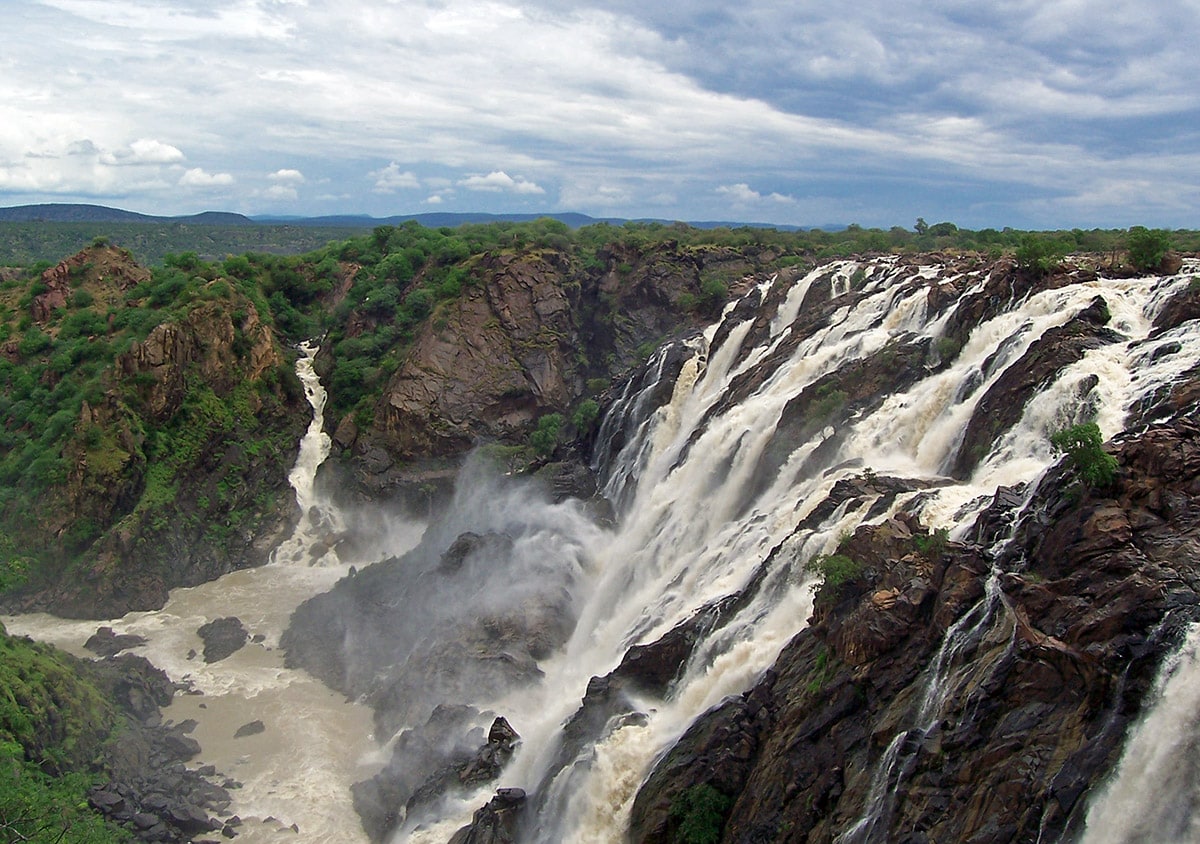
Waterfall has formed on a massif of Proterozoic gneiss. The front of the waterfall is rather unusual – a rough, jagged rock with a steep but not vertical face. The waterfall is sliding down along the steep rock, hitting countless ledges. As a result, when the water is high, the sound of Ruacana Falls is overwhelming.
The stream is divided more or less equally over the whole width of the falls – at low water, it divides into numerous smaller streams. A bit more water flows through the western part of the falls.
Unusual features of this waterfall are trees that stand on the cliff ledges. The trees seem to defy the gravity and immense power of the falling water – a photographer’s delight!
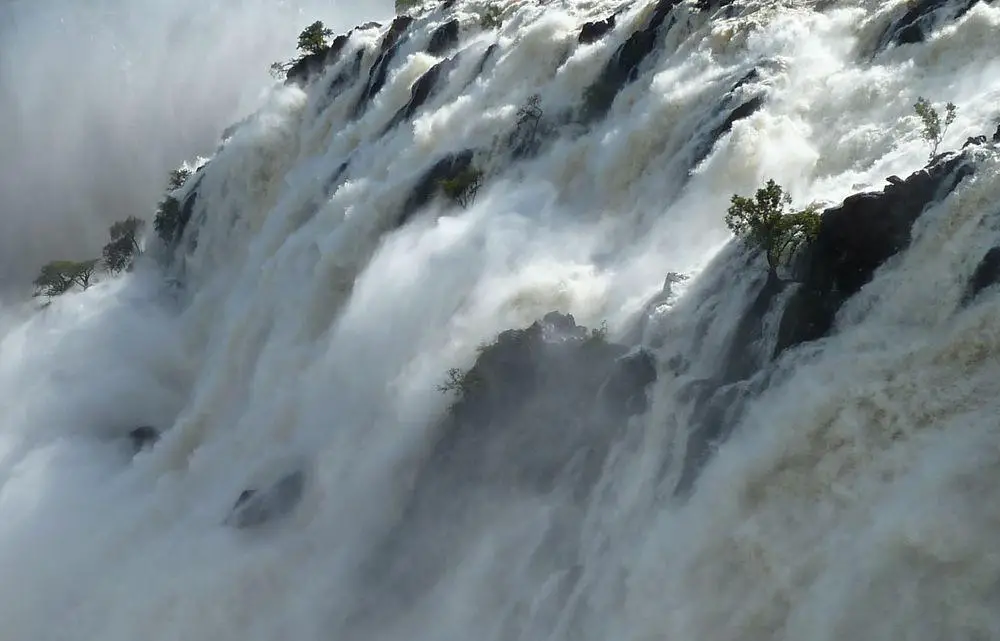
After the falls the stream flows in a narrow gorge. The banks of the river gradually turn into a long, charming oasis until some 140 kilometers further down Kunene River reaches the next major waterfall – Epupa Falls.
The best viewpoints are on the Namibian side. There is also a concrete stairway leading down – but the stairs are dilapidated and somewhat dangerous.
Ruacana Hydro Power station
Unfortunately, for the most part of the year, there is little water in this grandiose waterfall. Most of the stream disappears underground before reaching the falls.
These are the consequences of a major infrastructure project from the 1970ies. Ruacana Hydro Power station was built on the border of both countries (then – colony and occupied country) in order to supply the energy for Namibia.
The power station is located under the ground. Water is taken from the territory of Angola, where Kunene is dammed. Then it goes through the pipelines below the ground and reappears below the falls in Namibia.
The power station was reconstructed in 2012 and is the largest power plant in Namibia, with an installed power capacity of 330 MW.
When to see the falls?
The waterfall is far away from the usual tourist routes.
Many visitors are disappointed by Ruacana Falls – the trip is long, the landscape rather monotonous and when they arrive at the falls, there is not much to see – falls are dry or there is a little amount of water. Such sight is common in July-November.
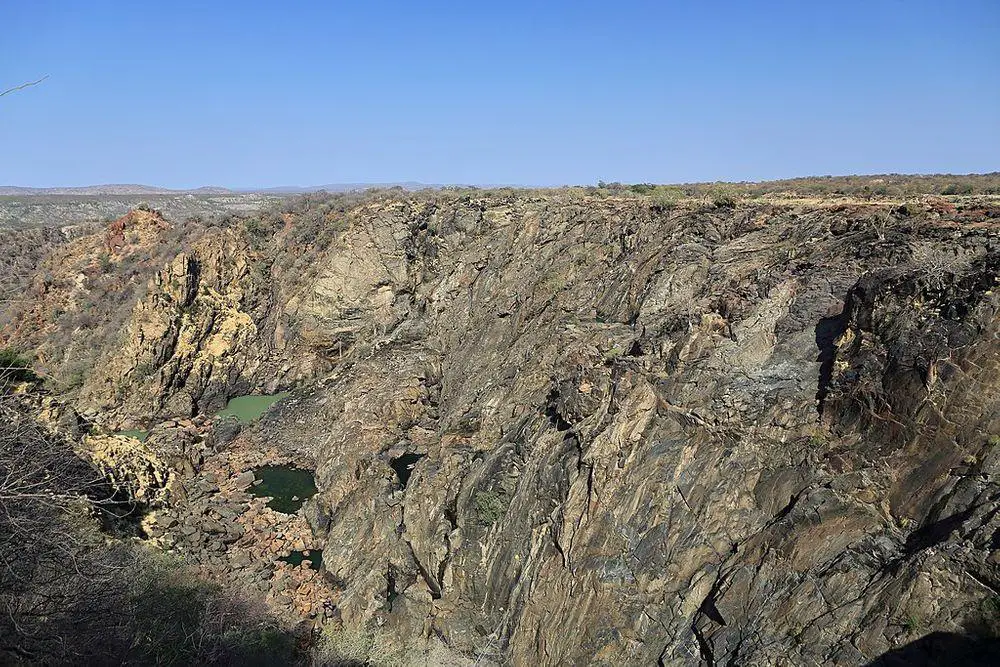
Meanwhile, in December-June there is some hope to see something more impressive. Then there is high water and power plant has no capacity to take it all – thus water returns in the falls.
The best chance to see much water in Ruacana Falls is in April-May but even then no one can warrant it.
In April 2018 the power of the river reached 1 609 m3/s but in April 1984 – more than 3000 m3/s. In such moments Ruacana Falls are among the world’s most powerful waterfalls.
References
- Ruacana Power Station, Nampower. Accessed in 23rd May 2019.
- Ruacana Falls, World Waterfall Database. Accessed in 23rd May 2019.
 Linked articles
Linked articles
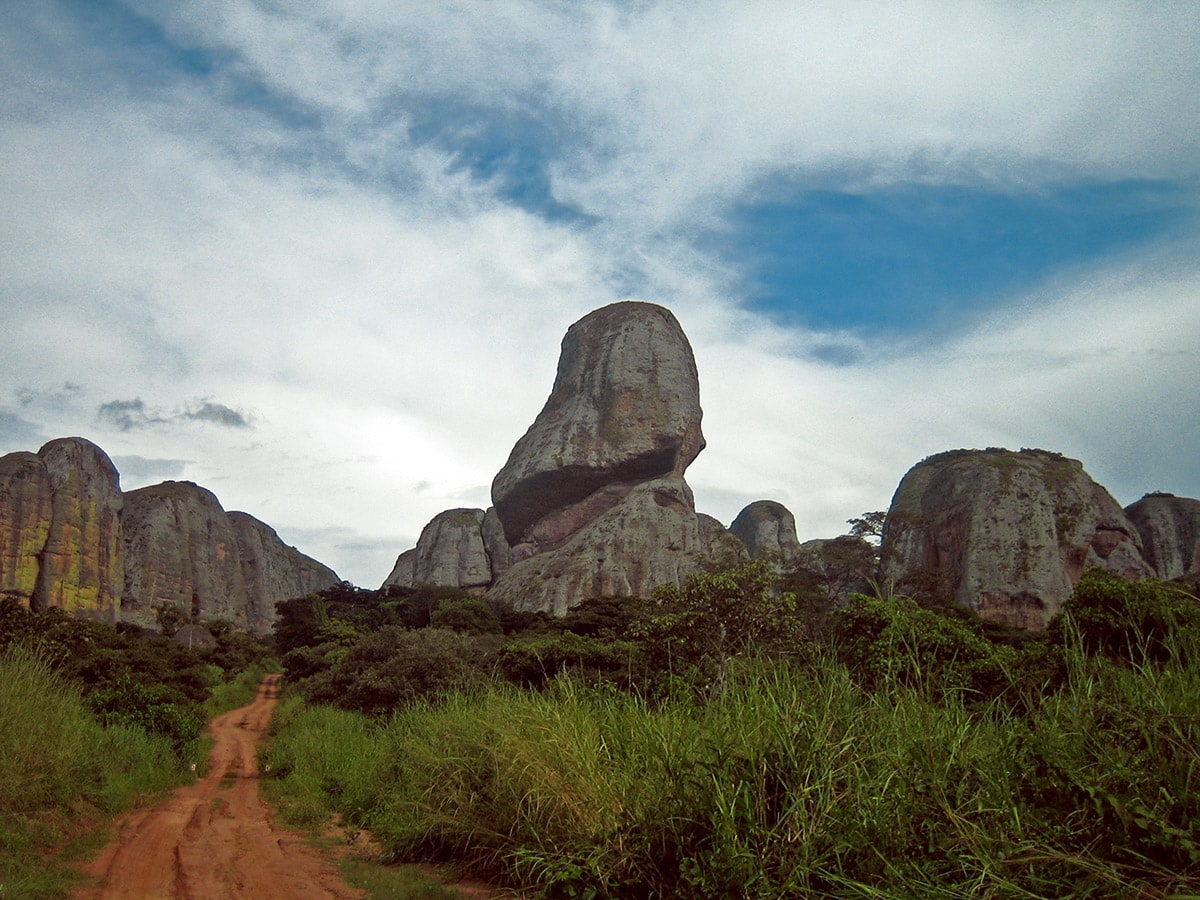
Wonders of Angola
Highlights of Angola could be the otherwordly cliff formations – such as Pungo Andongo and Tundavala cliffs with ravines. Scientifically important are archaeological landmarks left by many local cultures – but it seems that many discoveries are still to be made. The country has gorgeous waterfalls and also interesting examples of Portuguese colonial architecture.
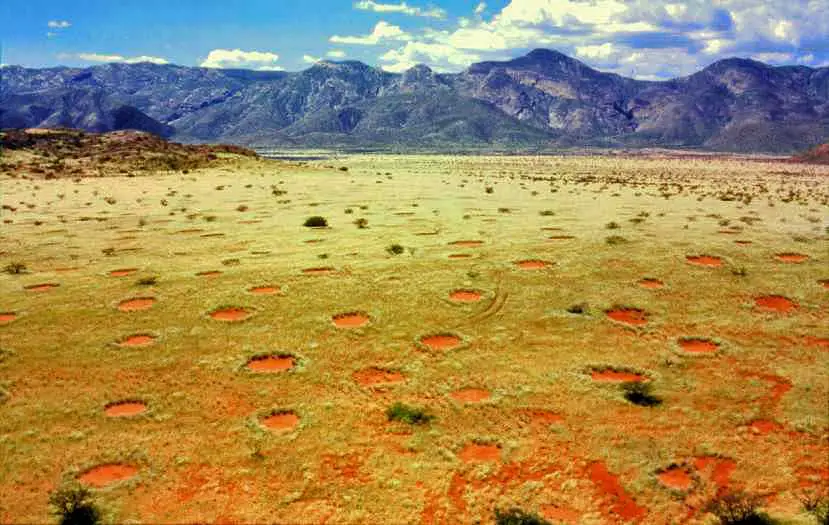
Wonders of Namibia
Few countries in the world have such visually stunning landmarks as Namibia – it is no wonder that the landscape of Namibia has been used to depict life on other planets.
There are found several unique landmarks without analogs – such as the largest piece of natural iron in the world (Hoba meteorite), the largest underground lake, 50 m long crystals, and some others.
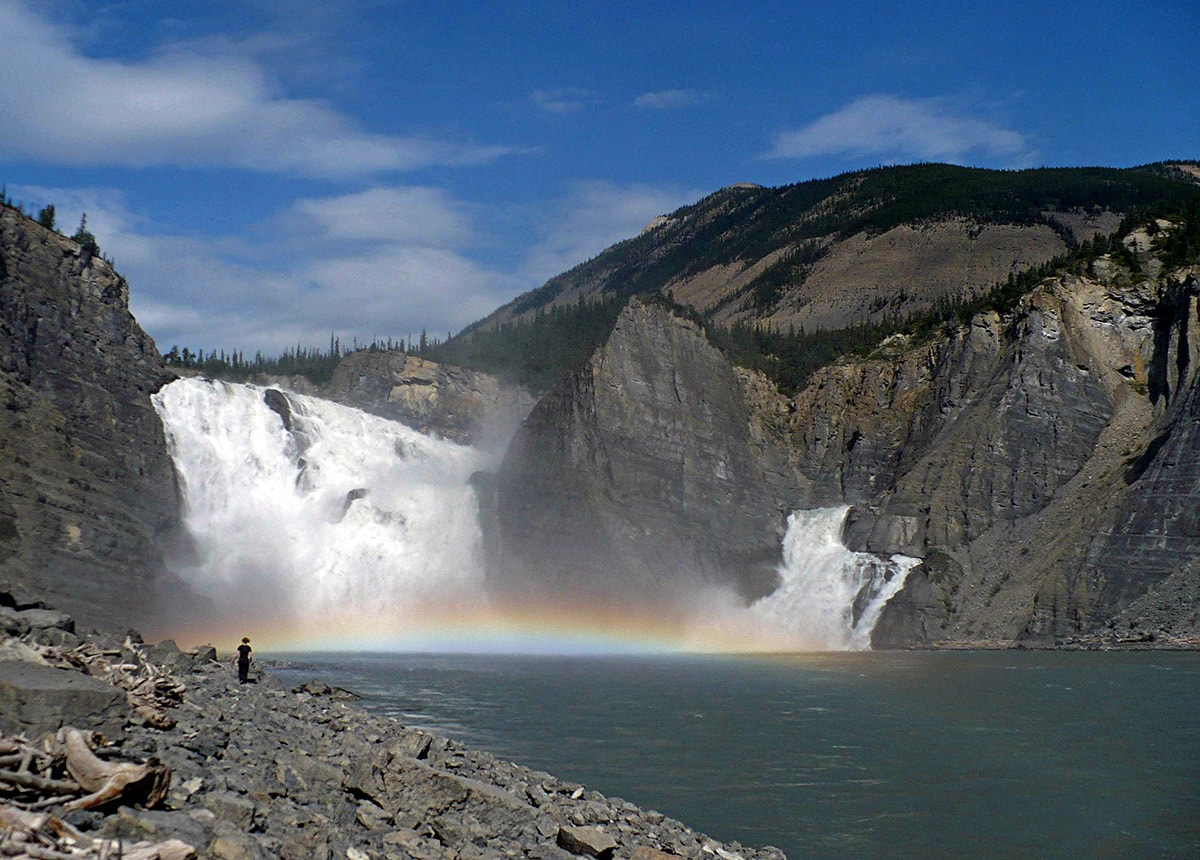
Waterfalls
Some of the most fascinating and awe-inspiring natural monuments are waterfalls or locations where a river abruptly changes its elevation.
 Recommended books
Recommended books
Secret Namibia
Namibia is a vast, ancient place, its legacy an endless expanse of desert sand fringed by coastal plain and rugged mountain terrain and dotted with geological wonders that remain the country’s most impressive features.
Geological Wonders of Namibia
A beautiful depiction (with explanations) of geology in Namibia, from impact crater sites, meteorites, canyons, and limestone caves to vast desert landscapes, moonscapes, and bizarrely shaped rocks, this picture-driven book will feature all the highlights of Namibian landscapes and landforms, with accessible brief explanations of the geology behind each of these.


